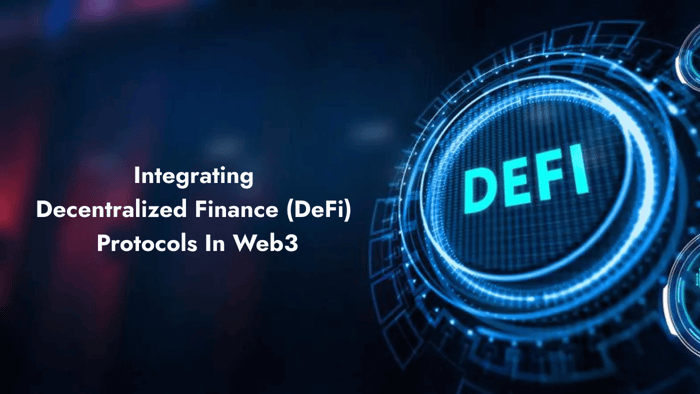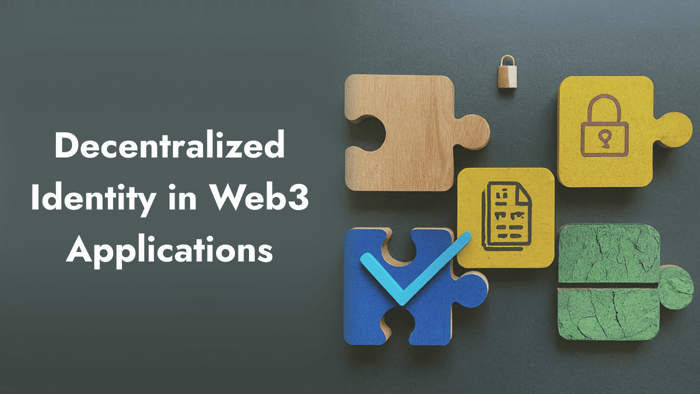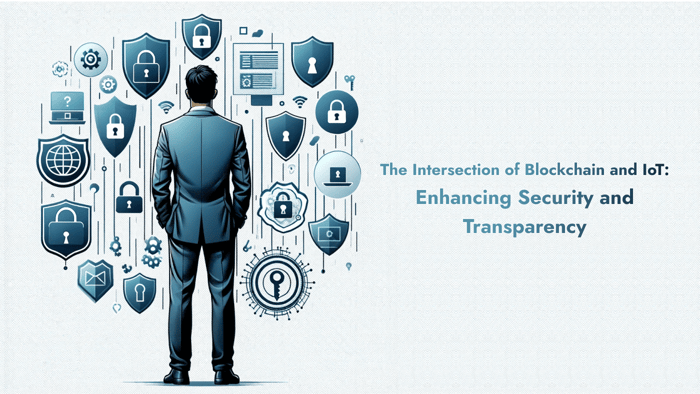Table of Contents
An in-depth guide to blockchain interoperability, its importance, challenges, and implementation techniques.
Blockchain technology is leading a paradigm shift across various sectors by facilitating decentralized architectures for diverse applications, ranging from financial transactions to supply chain management and digital identity. Prominent networks like Ethereum, Solana, and Avalanche offer distinct advantages, fostering an expansive ecosystem of decentralized applications (dApps) and smart contracts.
Blockchains function as isolated ledgers, lacking inherent mechanisms for cross-chain communication. This architecture restricts the seamless transfer of assets, data, and smart contract functionalities across different networks. Consequently, users often resort to centralized exchanges or third-party bridging solutions for asset transfer, which inherently introduces security vulnerabilities, inefficiencies, and high costs. Addressing these challenges is essential to achieve the full potential of a decentralized, multi-chain ecosystem.
Several solutions have emerged to tackle interoperability, including cross-chain bridges, sidechains, rollups, and interoperability protocols like the Cross-Chain Interoperability Protocol (CCIP).
This article explores the importance of blockchain interoperability, the associated technical and security challenges, and the leading-edge solutions propelling innovation in this domain.
What is Blockchain Interoperability?
Blockchain interoperability refers to the ability of different blockchain networks to communicate seamlessly with one another, facilitating the exchange of data and transfers of assets. This capability breaks away from the traditional limitations of individual blockchains, enabling interactions between chains and contributing to a more integrated and efficient decentralized ecosystem. Interoperability relies on cross-chain messaging protocols that allow one blockchain to read from or write to another, thereby enhancing the functionality of decentralized applications (dApps) beyond the constraints of a single chain.
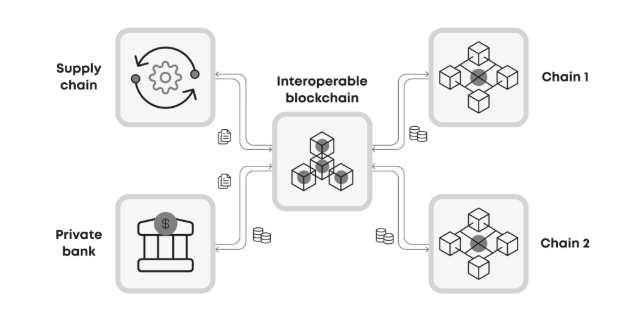
By enabling seamless communication across various blockchain infrastructures, interoperability empowers developers to create cross-chain dApps, including decentralized exchanges (DEXs), lending platforms, and cross-chain NFTs. This paves the way for new possibilities in blockchain applications. As the blockchain ecosystem continues to evolve, interoperability will play a crucial role in promoting widespread adoption and practical utility.
Key Challenges in Achieving Blockchain Interoperability
While blockchain interoperability offers significant advantages, various challenges impede its widespread implementation. These obstacles span technological barriers, security concerns, and regulatory hurdles; they include:
Technological Barriers: One of the biggest challenges in achieving interoperability among blockchains is the significant differences in their architectures. Blockchains utilize distinct consensus mechanisms, such as Proof of Work and Proof of Stake, along with varying data structures and smart contract languages, which complicates direct communication. For instance, Ethereum is compatible with the Ethereum Virtual Machine (EVM), while Solana is not, necessitating custom-built solutions for interoperability. Developing universal standards to bridge these differences remains a major technical challenge.
Security Risks: Interoperability solutions, including cross-chain bridges and messaging protocols, create new potential attack vectors. Many early blockchain bridges experienced high-profile hacks due to vulnerabilities, such as small validator sets or insecure cryptographic implementations. As various blockchains connect, the attack surface increases, raising the risk of fraudulent transactions, data manipulation, and smart contract exploits. Ensuring secure cross-chain transactions while minimizing these risks continues to be a significant challenge.
Regulatory and Governance Issues: Different jurisdictions enforce various compliance requirements for blockchain networks, which complicates cross-chain transactions. Interoperability solutions must navigate cross-border legal frameworks related to anti-money laundering (AML), taxation, and data privacy. Furthermore, the absence of standardized governance models for cross-chain protocols creates uncertainty, as different blockchains exhibit varying levels of decentralization and decision-making structures.
Scalability Bottlenecks: Interoperability boosts network activity; however, current scalability limitations may affect performance. High transaction volumes across various blockchains can result in congestion, delays, and increased fees. To ensure efficiency, interoperable blockchains require optimized consensus mechanisms and scalable infrastructures capable of managing a rise in cross-chain interactions.
As the technology industry evolves, addressing these challenges is crucial to unlocking the full potential of blockchain interoperability, ensuring a more connected and efficient decentralized ecosystem.
Techniques and Approaches for Blockchain Interoperability

Blockchain interoperability enables seamless communication, data exchange, and asset transfers across different blockchain networks. Several approaches and technologies have emerged to facilitate this interoperability, each addressing unique challenges and use cases.
Cross-Chain Bridges: Cross-chain bridges allow for the transfer of assets and data between two independent blockchain networks. These bridges usually operate using one of three mechanisms: lock-and-mint, burn-and-mint, or lock-and-unlock. In a lock-and-mint bridge, tokens are secured in a smart contract on the source blockchain, and an equivalent amount of wrapped tokens is created on the destination chain. A well-known example is the Ethereum-Polygon bridge, which enables users to transfer assets between Ethereum and Polygon, providing lower transaction costs and faster processing times. While these bridges improve cross-chain liquidity, they have also become targets for hackers due to vulnerabilities in their validation mechanisms.
Sidechains and Layer-2 Solutions: Sidechains are independent blockchains that work alongside a main blockchain, enhancing scalability and interoperability. Layer-2 solutions, such as rollups and state channels, improve transaction efficiency by processing transactions off-chain before finalizing them on the main chain. An example of interoperable sidechains is Polkadot’s parachains, where multiple blockchains run in parallel and are connected to the Relay Chain for shared security and governance. By allowing specialized blockchains to communicate effectively, sidechains and Layer-2 solutions help reduce congestion on main blockchains like Ethereum.
Interoperability Protocols: Interoperability protocols establish standardized methods for blockchains to communicate and exchange assets. The Inter-Blockchain Communication (IBC) protocol, part of the Cosmos ecosystem, enables different blockchains to transfer data and assets securely. Meanwhile, Hyperledger Cactus, a project under the Hyperledger Foundation, aims to provide enterprise-grade interoperability solutions by allowing various blockchain networks to transact seamlessly. These protocols simplify cross-chain communication and minimize the need for intermediary solutions such as bridges.
Oracles: Decentralized oracles serve as bridges between blockchains and external data sources, allowing smart contracts to respond to real-world events. They enhance cross-chain interoperability by providing verified data from various blockchains or external APIs. Chainlink’s Cross-Chain Interoperability Protocol (CCIP) enables smart contracts to access information from different blockchain networks, facilitating cross-chain applications in areas such as decentralized finance (DeFi), insurance, and supply chain tracking. By connecting blockchains to external systems, oracles expand the capabilities of blockchain-based applications.
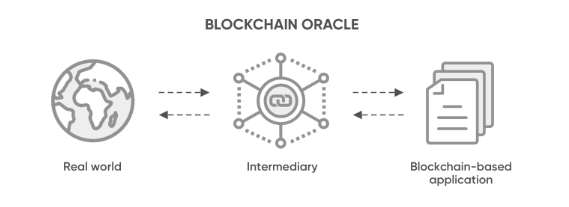
These interoperability techniques are essential for creating a more connected and efficient blockchain ecosystem. As technology advances, combining these approaches becomes critical for achieving seamless and secure cross-chain functionality.
Real-World Applications of Blockchain Interoperability
Blockchain interoperability has significant implications across various industries, enabling effortless data exchange and asset transfers between previously disconnected networks. This capability improves efficiency, security, and trust in decentralized systems.
Decentralized Finance (DeFi): Interoperability is a transformative development for decentralized finance (DeFi), enabling users to transfer assets effortlessly across multiple blockchains. Cross-chain lending and borrowing protocols allow users to use collateral from one blockchain while borrowing on another, improving liquidity and capital efficiency. Mechanisms such as atomic swaps and wrapped tokens support trustless exchanges of assets between different blockchains, decreasing reliance on centralized exchanges. For instance, Thorchain facilitates cross-chain swaps without the need for custodial intermediaries, allowing users to trade assets like Bitcoin and Ethereum in a decentralized manner.
Supply Chain and Logistics: Interoperability improves visibility throughout the supply chain by allowing data integration across different blockchain networks used by manufacturers, suppliers, and retailers. This capability enables real-time tracking of goods, which helps reduce fraud and inefficiencies. For example, a supply chain might utilize Hyperledger Fabric for its internal operations while using Ethereum-based smart contracts for payment processing. Interoperability facilitates communication between these networks, ensuring seamless coordination. A notable example of this is IBM Food Trust, which connects suppliers and distributors across various blockchain networks, demonstrating how interoperability enhances transparency in global supply chains.
Healthcare and Data Sharing: Secure and interoperable medical records allow for the easy sharing of patient data among healthcare providers, which enhances patient care while preserving privacy. Blockchain interoperability enables institutions using different ledger systems to exchange medical records securely without centralizing sensitive information. For instance, MediBloc empowers patients to control and share their medical data among various hospitals and insurance providers, ensuring consistency and accessibility within healthcare networks.
These real-world applications demonstrate how blockchain interoperability improves efficiency, security, and innovation across various industries, paving the way for a more interconnected digital economy.
Conclusion
Blockchain interoperability is an innovative advancement that can transform the blockchain ecosystem by enabling communication, data exchange, and asset transfers between multiple networks. It helps resolve the fragmentation of blockchain systems, creating new opportunities in decentralized finance (DeFi), supply chain management, and healthcare. By enhancing connectivity among different blockchains, interoperability improves efficiency, security, and scalability for a more integrated decentralized world.
However, challenges remain, including technical barriers like varying consensus mechanisms and smart contract languages. Security risks, especially with cross-chain bridges, expose networks to vulnerabilities. Additionally, regulatory hurdles complicate compliance across jurisdictions. Addressing these issues requires ongoing research, innovation, and collaboration among developers, enterprises, and policymakers.
Developers and businesses should explore interoperable blockchain platforms such as Polkadot, Cosmos, and Chainlink, and engage in integration projects that utilize cross-chain functionality. This involvement can help create a more connected and efficient blockchain ecosystem, unlocking new opportunities for decentralized applications worldwide.
Akava would love to help your organization adapt, evolve and innovate your modernization initiatives. If you’re looking to discuss, strategize or implement any of these processes, reach out to [email protected] and reference this post.



